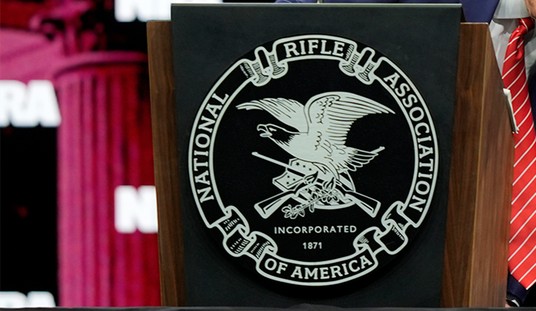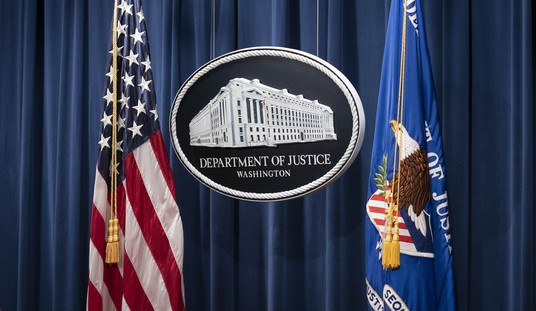In less than a month the Supreme Court will hear oral arguments in the case known as New York State Rifle & Pistol Association v. Bruen; the legal challenge to New York’s carry permitting laws that seeks to have them tossed out as a violation of the Second Amendment. Over the course of the summer, we’ve seen dozens of amicus briefs filed in support and opposition of the NYSPRA’s lawsuit, but now the final brief has been submitted to the court, and it comes from the NYSPRA itself (the NRA is also providing support for the lawsuit, but is not a named plaintiff).
The petitioner’s reply brief is a chance to answer the defendant’s argument in writing, which means in this case former Solicitor General Paul Clement is pushing back on New York’s claim that by granting plaintiffs Robert Nash and Brandon Koch “restricted” carry permits that allow them to carry their guns while hunting or target shooting, they’ve satisfied the pair’s right to bear arms. Clement begins his thorough takedown of New York’s defense by noting that the state has in essence conceded that a right to bear arms outside the home exists, and now they’re just arguing over how much the state can intrude on that right.
Indeed, the historical record is so overwhelming that the state no longer disputes that the Second Amendment protects the right to carry handguns outside the home for self-defense. While the state treats that concession as a non-event, it contradicts its earlier arguments and fatally undermines the reasoning of the decision the state seeks to preserve. The state now retreats to the equally indefensible claims that the right vanishes in “populous areas” and extends only to those with a “non-speculative need” to exercise it.
Those misguided claims depend on ignoring constitutional text and rewriting history through selective quotation, excising from the law books anything that does not fit the state’s revisionist narrative, including much of the material relied upon in District of Columbia v. Heller, 554 U.S. 570 (2008).
The state takes its revisionism so far as to claim there is no example in all Anglo American history of the carry rights petitioners seek. In fact, at least 43 states allow just that, while, as in Heller, only a few jurisdictions follow New York’s lead of presumptively denying a right that the Constitution guarantees to all.
Clement cuts through all of New York’s B.S. and gets to the meat of the issue right here. The Constitution protects the right to bear arms, and the Supreme Court has already said in Heller that the core purpose of the Second Amendment is self-defense. New York state law forbids carrying a gun in self-defense, unless you’re able to convince a judge or a sheriff that you have some special need to do so.
As Tom King, head of the New York State Rifle & Pistol Association said in a statement:
“New York is arguing the entire Empire state is like a government building and should be a huge gun-free zone where only criminals and the privileged can bear arms. The state then defends its unconstitutional and discriminatory policies by cherry-picking facts from history and ignoring inconvenient truths and common sense. The brief we filed today emphasizes the fundamental fact that the self-defense rights of law-abiding Americans do not vanish the moment a person steps outside their front door. NYSRPA, the NRA, and gun owners across America look forward to oral arguments on Nov. 3 and hope the Supreme Court rules on behalf of the Constitution.”
New York treats a right as a privilege and in doing so has deprived countless residents of their civil liberties, including the thousands of people sentenced to prison and saddled with a felony record for the “crime” of carrying a gun without a license they have no chance of ever receiving. That’s the issue, and the Supreme Court has the chance to start to set things right when it decides this case.
Clement’s brief also bluntly calls out New York’s attempt to reframe the issue before the court.
When the state is not rewriting the historical record, it is attacking arguments petitioners did not make, while defending a law it did not pass and licenses it did not issue. The state proceeds as if its law restricts the right to carry only at Yankee Stadium and petitioners demand a right to carry always and everywhere. But very nearly the opposite is true. Petitioners do not challenge any of New York’s many separate laws prohibiting handguns in specific, sensitive places. They contest New York’s effort to treat virtually the entire Empire State as a sensitive place and to prohibit petitioners from carrying their handguns for self-defense virtually anywhere, even (contrary to the state’s repeated claims) in remote “back country” areas.
New York wasted a lot of time and ink in its final brief to the Supreme Court arguing that the plaintiffs were seeking the right to carry “guns everywhere and at any time”. That may be something that many gun owners support, but it’s most certainly not the question at hand here.
Clement then turns to the standard of review that should he believes should be used to determine the constitutionality of New York’s Sullivan Act, and once again utterly obliterates the state’s position.
The incompatibility of New York’s outlier regime with the text, history, and tradition of the Second Amendment is obvious and suffices to resolve this case. By effecting “a complete prohibition” on carrying handguns outside the home for self-defense via a regime suffused with discretion, the Sullivan Law flunks any applicable level of scrutiny. Heller, 554 U.S. at 629.
But it speaks volumes that the state does not even try to defend its law under strict scrutiny or as narrowly tailored (even though this Court just reaffirmed that even intermediate scrutiny demands narrow tailoring). The state instead urges the Court to craft a sui generis form of scrutiny that is heightened in name only and far more lax than the scrutiny that applies to invasions of other textually guaranteed fundamental rights. But the Second Amendment is not “a second-class right.” McDonald v. City of Chicago, 561 U.S. 742, 780 (2010) (plurality op.). The Court should reverse the decision below and hold that petitioners have a right to do what even the state now concedes the Constitution protects: bear arms outside the home for self-defense.
All that, by the way, is just Clement’s introduction. I’d encourage you to read the entire brief if you want to see his fully fleshed-out argument in advance of oral arguments on November 3rd. We won’t get a chance to watch them live, but the Court should post the audio of the arguments within 24 hours, and Clement’s brief may give us a preview of some of the questions the conservative wing of the Court will have for the attorneys defending New York’s denial of the right to bear arms.








Join the conversation as a VIP Member